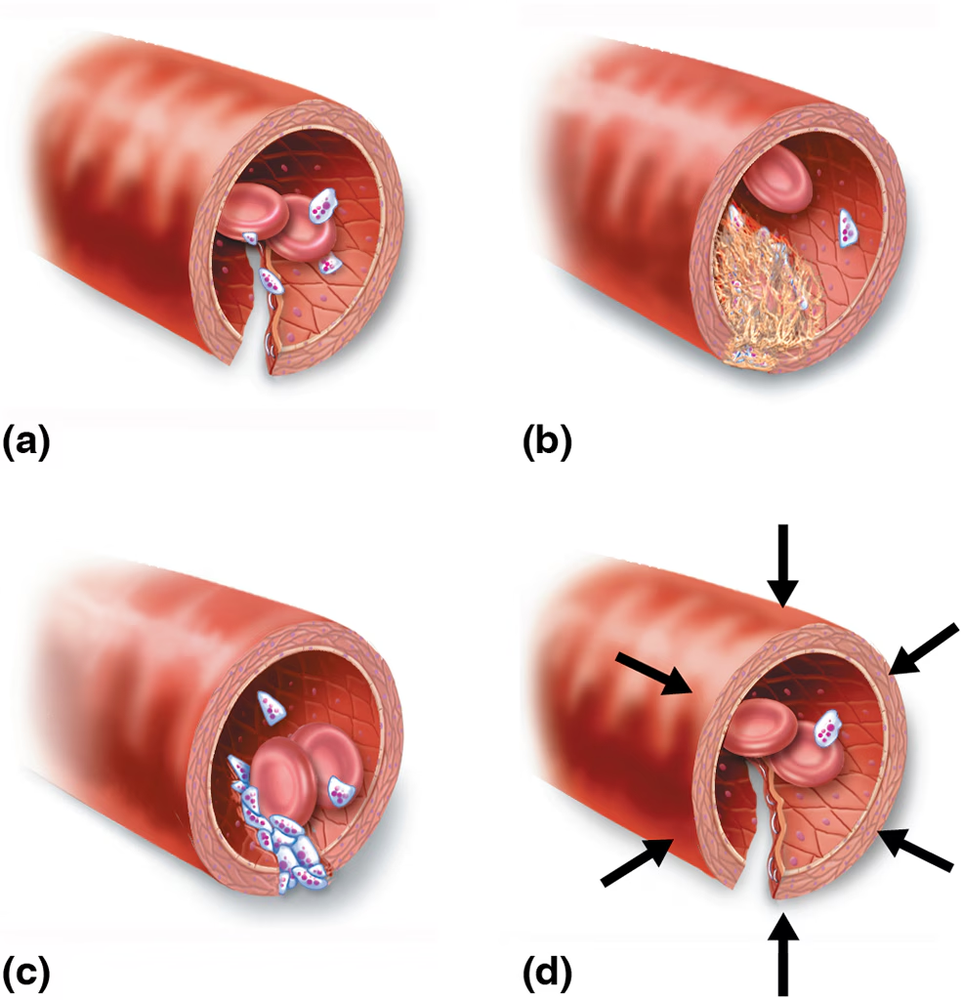The following is a list of the phases involved in the process of hemostasis:
- Coagulation
- Fibrinolysis
- Vascular spasm
- Retraction
- Platelet phase
The correct sequence of these phases is:
(a) 5, 1, 4, 2, 3
(b) 3, 5, 1, 4, 2
(c) 2, 3, 5, 1, 4
(d) 3, 5, 4, 1, 2
(e) 4, 3, 5, 2, 1






